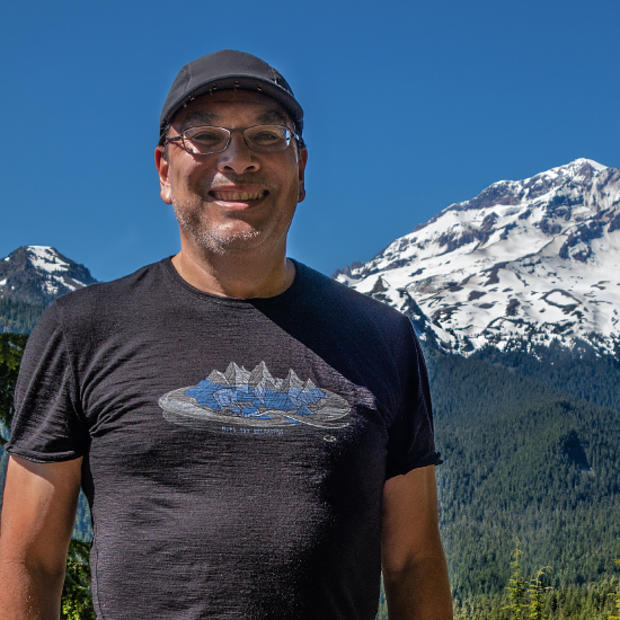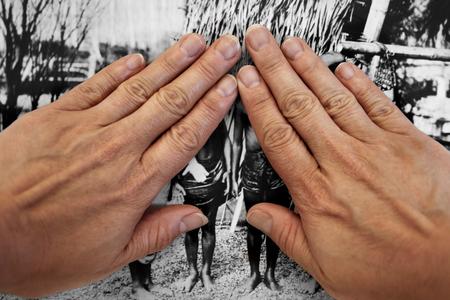One or more suspects have been cited for tagging a bridge at Mount Rainier National Park, the latest to be hit with what some consider an emerging scourge of graffiti in U.S. national parks.
Park visitors witnessed the vandalism, which occurred over the weekend, and reported the incident quickly enough for law-enforcement rangers to locate the suspects, according to Kathy Steichen, a spokesperson for Mount Rainier National Park.
Like national parks across the country, Mount Rainier is short on staff and budget, so the assistance by park visitors was invaluable, Steichen said today.
“They did the very best thing,” Steichen said.
The park is not prepared to release names, the number of citations issued, or the violations that were cited, Steichen said. The perpetrators were part of a group, she added.
The suspects tagged log railings along each side of the bridge over Edith Creek, above Myrtle Falls in the Paradise area of the park. Except for the bridge, the trail to Myrtle Falls and linking beyond to the Skyline Trail remain buried by about three feet of snow.
Defacing park property usually is a federal misdemeanor punishable by a fine, generally about $250, for first offenses, up to $5,000 and/or six months incarceration. More serious offenses, considered Depredation of Federal Property, can be pursued as misdemeanors or felonies punishable by fine or up to 10 years in jail for damage exceeding $1,000.
Graffiti damage has been “very uncommon at Mount Rainier,” Steichen said. It has been on the rise in other national parks, almost exclusively in the West.

A well-known French graffiti artist, Andre Saraiva, paid a fine on April 1 to the U.S. District Court in Los Angeles for tagging a boulder in Joshua Tree National Park in February, according to a park release. The Los Angeles Times reported the fine as being $275. Joshua Tree, about three hours east of Los Angeles, and Golden Gate National Recreation Area in San Francisco have been among the most vandalized national parks because of their proximity to population centers.
Vandalism in general has been down in National Park Service units during recent years, according to Jeffrey G. Olson, an NPS spokesperson. A study Olson helped compile shows an average of 4.8 incidences of vandalism in 397 NPS units in 2012, down from an average of 7.3 in 377 units in 2003. The cost per incident was $163 in 2012, down from a high during the study period of $411 in 2005.
Incidences of graffiti lately have generated national attention, mostly prompted by the work of the popular, L.A.-based hiking blog, Modern Hiker.
Last fall, the NPS began investigating a rampage of graffiti in eight national parks by a woman since identified as Casey Nocket, 22, of Highland, N.Y. She posted photos of acrylic paintings on national park properties, signed “Creepythings,” on now-deleted Instagram and Tumblr accounts. The photos first were reported by the hiking website, Calpidder, then collected and posted by Modern Hiker.
The NPS has tied Nocket to vandalism in Yosemite, Death Valley and Joshua Tree in California; Crater Lake in Oregon; Zion and Canyonlands in Utah; and Rocky Mountain National Park and Colorado National Monument in Colorado. Nocket has not been charged, and the NPS’ Olson said her case “is still open and under investigation.”
There has been a rising uproar, mostly digital, over the vandalism, although a Los Angeles Times editorial today decries the damage. An online petition at Whitehouse.gov urged the “most serious of charges” be pursued for Nocket’s offenses. The petition collected 12,640 signatures before being archived.
Casey Schreiner founded Modern Hiker in 2006 to help reveal recreational opportunities in the Los Angeles area. These days, Schreiner says he has “found myself at the forefront of the online investigation of vandalism” in parks, and spends “a big chunk of time” monitoring the subject. After driving coverage of Nocket and Saraiva, Schreiner says Modern Hiker became known as “the site that can get people caught” and gets considerable emails with evidence of vandalism in parks all over the country.
“In 90 percent of the cases, there’s nothing anyone can do,” Schreiner said, adding that Nocket and Saraiva made it easier to find them when they “left a rich social-media trail to follow.”
Indeed, the process of linking social-media posts to Nocket received a boost when a backpacker posted photos of her painting near Vernal Falls in Yosemite National Park on Reddit. Steve Yu, a special agent with the Park Service in Yosemite, used the post to launch an investigation and receive screen shots of the photos, which had been removed.
The graffiti at Mount Rainier National Park more resembles the work of Saraiva in that it is a “tag,” usually the artist’s signature. Nocket’s were more elaborate, drawing-like “throw-ups.”
Addressing a debate over whether graffiti is vandalism or art, the Los Angeles Times editorial board said that in national parks: “It’s desecration.”
The writer's currently developing The Trail Posse (trailposse.com) to encourage diversity in the outdoors.


